
Roots
Consider, for a moment, the whisper of ancient winds through towering palms, the quiet hum of life in sun-drenched savannahs, or the soft lapping of river waters against verdant banks. It is within these settings, across continents and countless millennia, that humanity first turned to the earth for sustenance, for healing, and, yes, for beauty. Long before the advent of modern laboratories and synthetic compounds, our ancestors, with a profound intuition and a deep respect for their surroundings, sought out natural provisions to care for their coiled hair. This exploration delves into the elemental understanding that formed the bedrock of ancient hair conditioning, tracing the foundational relationship between humanity and the botanical world.
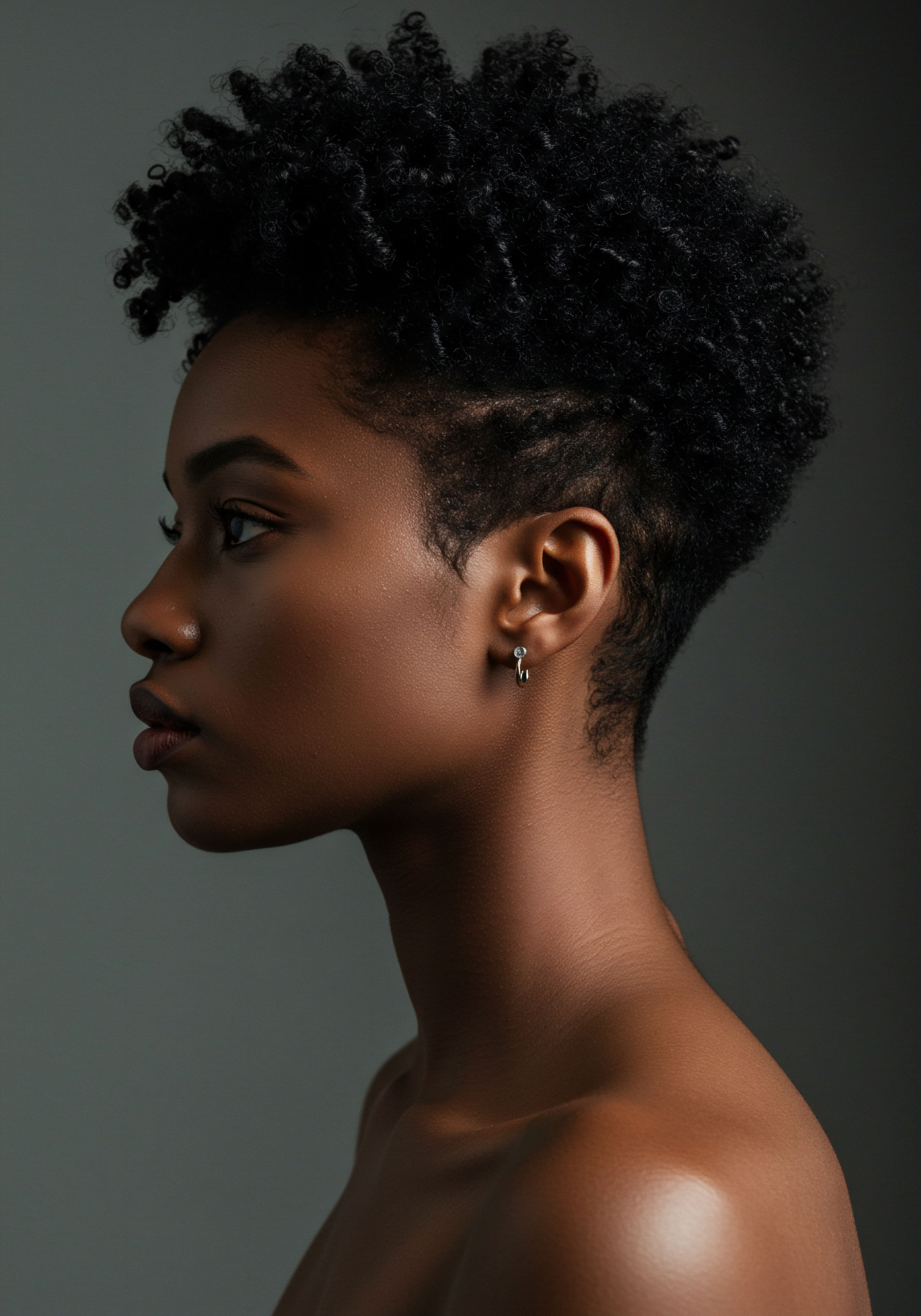
The Architecture of Coiled Strands
To truly grasp the efficacy of ancient conditioning practices, one must first appreciate the inherent nature of coiled hair. Unlike straighter textures, coiled strands possess a unique helical structure, often exhibiting multiple bends and twists along their length. This intricate architecture, while breathtaking in its diversity, presents specific challenges. The natural oils produced by the scalp, known as sebum, struggle to travel down the winding path of a coiled strand, leaving the ends particularly susceptible to dryness.
Additionally, the cuticle layers, which act as the hair’s protective outer shield, can be more raised at the points of curvature, leading to increased vulnerability to external stressors and moisture loss. This inherent dryness and delicate structure made the need for external conditioning a deeply felt requirement across ancient cultures.
The very composition of hair, primarily keratin protein, reacts distinctly to environmental factors. Coiled hair, with its unique structural nuances, often exhibits greater porosity, meaning it can absorb moisture readily but also release it just as quickly. This characteristic amplifies the need for substances that could both introduce hydration and then seal it within the strand. Ancient people, without the benefit of microscopes or chemical analysis, understood this intuitively through observation and persistent trial.

Early Human Observation of Nature’s Provisions
The earliest forms of hair conditioning arose from a keen observation of the natural world. Our ancestors were intimately connected to their environments, discerning the properties of plants, minerals, and even animal products through direct interaction. They noticed which leaves, barks, or fruits felt softening, which offered a protective sheen, or which seemed to hold moisture when applied to skin or other natural fibers. This empirical approach, passed down through generations, formed a living pharmacopeia of hair care.
Ancient people intuitively recognized the specific needs of coiled hair, leading them to seek out nature’s provisions for conditioning.
Consider the simple act of gathering. A ripe avocado, its creamy texture a testament to its richness, might have been mashed and applied to parched strands, its natural fats providing a tangible softening effect. Or perhaps a honeybee’s comb, sticky and sweet, was found to leave a hydrating residue.
These initial discoveries, born of necessity and curiosity, laid the groundwork for more elaborate conditioning practices. The wisdom was not merely theoretical; it was embodied in the very hands that worked these natural substances into the hair.

The Humectant and Emollient Quest
The fundamental properties sought in ancient conditioners were those of humectants and emollients. Humectants are substances that draw moisture from the air or from within the hair itself, binding it to the hair shaft. Emollients, conversely, create a protective barrier, sealing in that moisture and smoothing the hair’s outer cuticle, providing softness and suppleness.
- Honey ❉ A widely accessible natural humectant, honey’s sugar content allowed it to attract and retain water, making it a valuable conditioner for dry hair. Its use dates back to ancient Egypt and Greece.
- Aloe Vera ❉ Known for its soothing and moisturizing qualities, aloe vera gel provided hydration and scalp relief, its properties recognized across various ancient cultures.
- Glycerin ❉ While not a direct plant product, glycerin is a simple sugar alcohol found in many natural fats and oils, acting as a powerful humectant, often present in ancient oil mixtures.
The quest for emollients led ancient people to a variety of fats and oils. These substances, rich in fatty acids, could penetrate the hair shaft or coat its surface, reducing friction and enhancing shine.
| Emollient Substance Olive Oil |
| Primary Source Olives (Olea europaea) |
| Cultural Context Ancient Greece, Rome, Egypt, Mediterranean |
| Emollient Substance Castor Oil |
| Primary Source Castor Beans (Ricinus communis) |
| Cultural Context Ancient Egypt, India |
| Emollient Substance Coconut Oil |
| Primary Source Coconuts (Cocos nucifera) |
| Cultural Context Ancient India (Ayurveda), Polynesia, Africa |
| Emollient Substance Shea Butter |
| Primary Source Shea Tree Nuts (Vitellaria paradoxa) |
| Cultural Context West Africa |
| Emollient Substance Moringa Oil |
| Primary Source Moringa Seeds (Moringa oleifera) |
| Cultural Context Ancient Egypt, Africa |
| Emollient Substance This table highlights some key natural emollients used by ancient civilizations for hair conditioning. |
These substances, whether pressed from seeds, rendered from fruits, or extracted from plants, offered a tangible softness and protective quality to coiled hair, mitigating the challenges of dryness and breakage. The intuitive understanding of these properties formed the initial wisdom of ancient hair care.
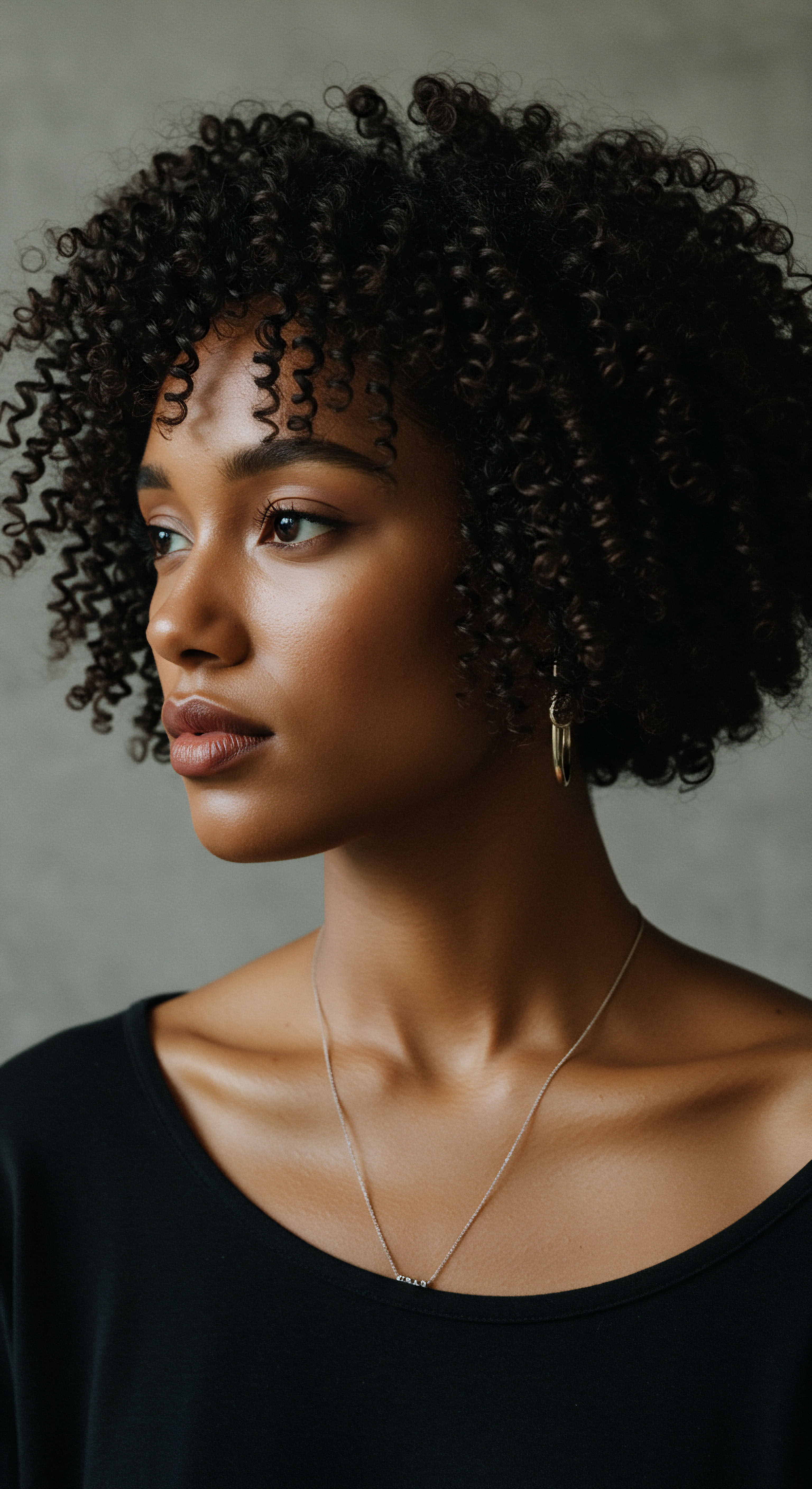
Ritual
Stepping from the simple recognition of nature’s offerings, we move into the realm of deliberate practice, where observation transformed into patterned action. Ancient peoples did not merely discover substances; they wove their application into daily or periodic routines, creating rituals that nourished not only the hair but also the spirit. This section delves into the purposeful techniques, the rudimentary tools, and the rhythms that shaped ancient conditioning, guiding us through the applied wisdom of our ancestors.

Crafting Elixirs from the Earth
The conditioning agents of antiquity were seldom used in their raw, unadulterated state. Instead, they were often combined, infused, or processed to enhance their efficacy and sensory appeal. This early form of cosmetic chemistry involved methods passed down through oral tradition and practical demonstration.
Oils, the most common conditioning base, were extracted through various means, including pressing, maceration, or rendering. For instance, the olive was pressed to yield its precious oil, while certain seeds might have been ground and steeped in warm water or other oils to release their beneficial compounds. Herbs, roots, and flowers were frequently infused into these oils, allowing their therapeutic properties to seep into the conditioning medium. This might involve slow heating or prolonged soaking in sunlight.
Beyond simple oils, more complex mixtures were formulated. Honey, often combined with oils or milk, created rich, hydrating masks. Clays, such as rhassoul clay from Morocco, were used not only for cleansing but also for their mineral content and ability to absorb impurities without stripping natural moisture, leaving hair feeling soft. Plant butters, like shea butter, were melted and blended, sometimes with botanical extracts, to create a thicker, more protective balm.
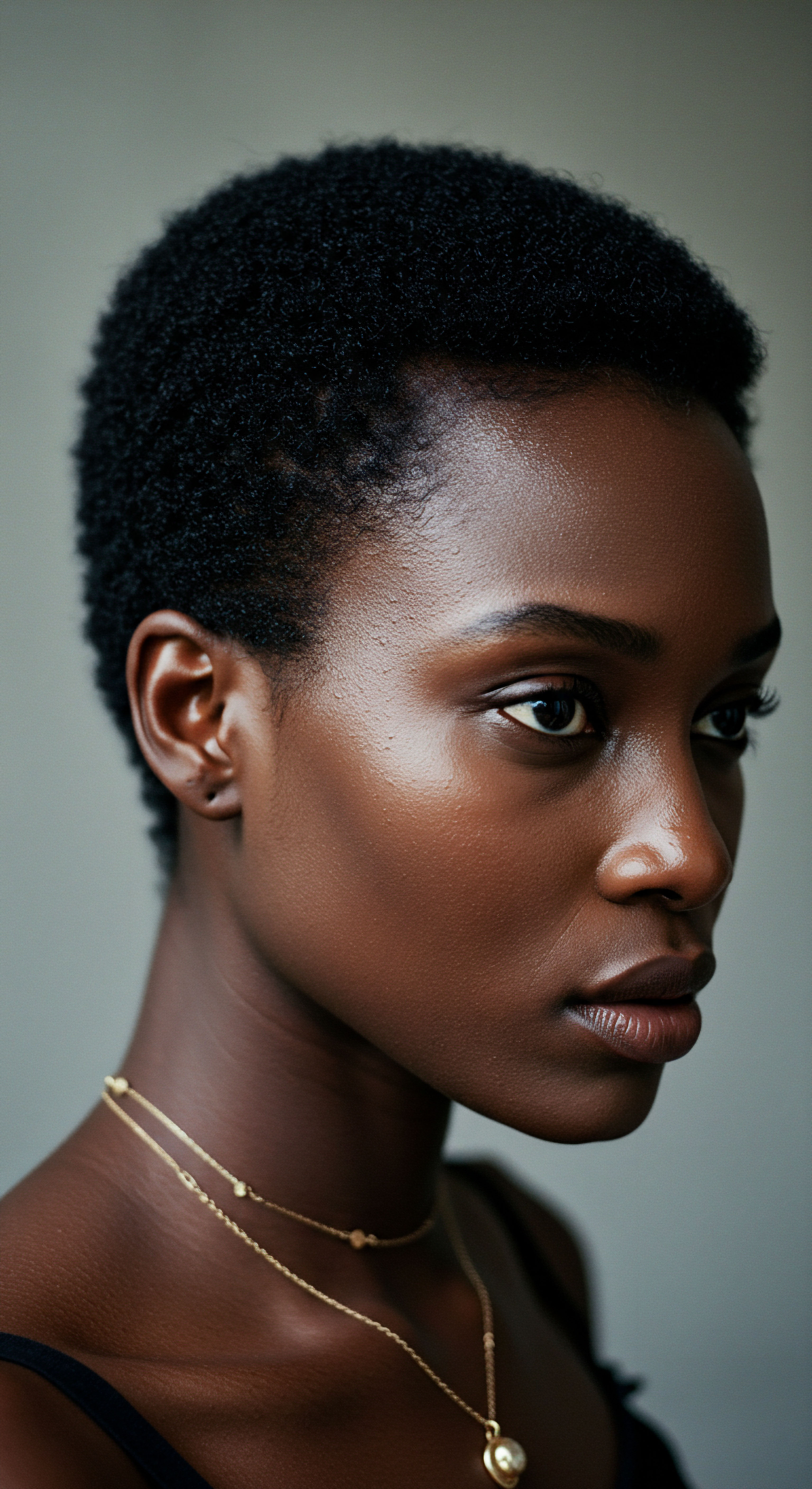
What Methods of Application Did Ancient Civilizations Use?
The application of these natural conditioners was often a hands-on, deeply personal or communal act. Scalp massages were a widespread practice, recognized for their ability to stimulate circulation and promote overall hair health. The warm oils were gently worked into the scalp and down the hair shaft, ensuring even distribution. This manual application allowed for a sensory connection with the hair and the conditioning substances.
Ancient tools, though simple, played a significant role. Combs, often crafted from wood, bone, or ivory, were used not only for detangling but also for distributing conditioners evenly through the hair. Some archaeological finds even suggest the use of rudimentary hairpins or styling implements that might have aided in holding hair in place while treatments absorbed.
| Tool Type Combs |
| Common Materials Wood, Bone, Ivory |
| Purpose in Conditioning Detangling, distributing product, scalp stimulation |
| Tool Type Pins / Needles |
| Common Materials Bone, Ivory, Metal |
| Purpose in Conditioning Securing hair during treatments, styling |
| Tool Type Small Jars / Pyxides |
| Common Materials Ceramic, Glass, Stone |
| Purpose in Conditioning Storing and mixing conditioning ingredients |
| Tool Type Pestles and Mortars |
| Common Materials Stone, Wood |
| Purpose in Conditioning Grinding herbs and seeds for infusions |
| Tool Type These tools facilitated the preparation and application of ancient hair conditioning remedies. |
The application process itself could be a prolonged affair, allowing the natural ingredients ample time to penetrate and work their magic. This extended contact was particularly beneficial for coiled hair, which often requires longer absorption times due to its structure.

The Daily and Seasonal Hair Rhythms
Ancient hair care was often synchronized with the rhythms of daily life and the changing seasons. In some cultures, hair oiling was a daily ritual, a protective measure against environmental elements. In others, deeper conditioning treatments might have been performed weekly or on specific ceremonial occasions.
The rhythmic application of natural substances transformed ancient hair care into a deeply rooted cultural practice.
For example, in ancient India, Ayurvedic practices emphasized daily oiling, not only for hair health but also for spiritual well-being. The oils, often infused with herbs like amla or neem, were massaged into the scalp, believed to rejuvenate and detoxify. Similarly, the Basara Arab women of Chad, known for their long, healthy hair, traditionally apply a mixture containing Chebe powder, oils, and butters, often leaving it on for days at a time, protecting the hair and retaining length by preventing breakage. This sustained application is a testament to the understanding that consistent, gentle care yielded the most profound results for coiled hair.
The availability of certain plants also dictated seasonal practices. Fresh botanicals might have been used when abundant, while dried herbs and stored oils served as year-round staples. This adaptability to nature’s bounty speaks to a sustainable and resourceful approach to hair wellness. The rituals were not rigid dictates but living practices, shaped by both tradition and environmental realities.

Relay
We turn now to a deeper understanding, one that connects the observed practices of antiquity with the underlying science and the enduring cultural echoes that resonate today. The simple act of conditioning coiled hair in ancient times was rarely a solitary, utilitarian task. It was a nexus where botanical wisdom met community, where personal identity intertwined with shared heritage. This section delves into the intricate interplay of scientific principles, cultural meaning, and the remarkable persistence of these natural conditioning legacies.

The Chemistry of Ancient Conditioning
While ancient civilizations lacked modern chemical analysis, their practical application of natural substances often aligned with principles we understand today. The efficacy of many ancient conditioners stems from their molecular composition.
- Fatty Acids ❉ Oils such as Coconut Oil, Olive Oil, and Shea Butter are rich in fatty acids like lauric acid, oleic acid, and stearic acid. Lauric acid, for instance, has a low molecular weight and a straight linear chain, allowing it to penetrate the hair shaft, helping to prevent protein loss. Oleic acid and stearic acid, common in many plant butters and oils, provide occlusive properties, forming a protective film on the hair surface that seals in moisture.
- Saccharides and Sugars ❉ Honey, a natural humectant, contains a high concentration of sugars. These sugars possess hydroxyl groups that readily form hydrogen bonds with water molecules, drawing moisture from the environment into the hair and holding it there.
- Vitamins and Antioxidants ❉ Many plant-based oils and extracts, such as those from Argan, Marula, or Aloe Vera, are sources of vitamins (like Vitamin E) and antioxidants. These compounds can help protect hair from environmental damage, mitigating oxidative stress that might otherwise degrade hair proteins.
- Minerals and Clays ❉ Clays like Rhassoul Clay are rich in minerals such as magnesium, calcium, and potassium. These minerals can contribute to hair strength and scalp health, while the clay’s absorbent properties gently cleanse without stripping.
The layering of different substances, such as applying an oil (emollient) after a honey rinse (humectant), created a synergistic effect, maximizing hydration and retention for coiled hair. This intuitive understanding of product interaction was a hallmark of ancient hair care.
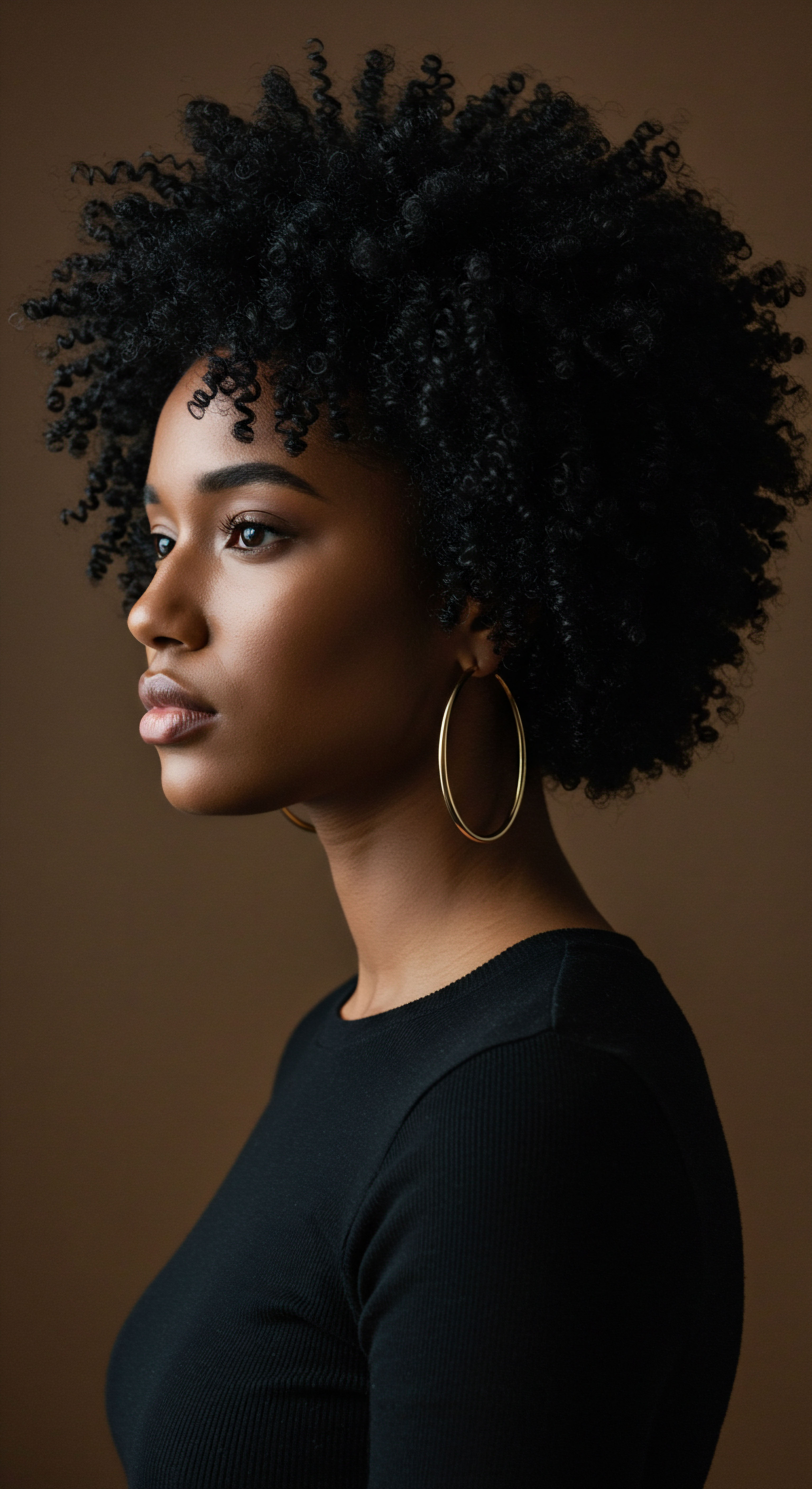
Cultural Significance of Hair Rituals
Beyond their functional benefits, ancient hair conditioning practices were imbued with deep cultural meaning. Hair, particularly coiled hair, served as a potent symbol of identity, status, spirituality, and community.
In many African societies, hair styling and care were communal activities, often performed by mothers, sisters, or close friends. These sessions were not merely about grooming; they were spaces for sharing stories, transmitting cultural knowledge, and strengthening social bonds. The specific styles, and by extension the conditioning required to maintain them, could communicate age, marital status, tribal affiliation, or even personal experiences.
The act of applying conditioning substances became a ritual of care, connection, and continuity. It was a tangible expression of reverence for one’s heritage and a connection to ancestral wisdom. This cultural anchoring elevated hair care from a mundane task to a meaningful practice, reinforcing communal ties and individual belonging.

A Glimpse into Ancient Hair Archeology
Direct evidence of ancient hair conditioning is rare, given the delicate nature of organic materials in archaeological contexts. Yet, scientific advancements are slowly peeling back the layers of time, offering glimpses into these practices. While most archaeological findings related to hair focus on styling tools or dietary analysis through hair, a unique instance from the Bronze Age offers a fascinating, if unexpected, insight into substances absorbed by ancient hair.
In a study published in Scientific Reports in 2023, researchers analyzed 3,000-year-old human hair strands from a burial site in Menorca, Spain. Using high-resolution mass spectroscopy and ultra-high-performance liquid chromatography, they identified psychoactive alkaloids, specifically Atropine and Scopolamine, which are naturally present in plants like mandrake and henbane. This discovery, while primarily focused on ancient drug use in ritual contexts, highlights the remarkable preservation potential of organic compounds within hair over millennia and the sophisticated analytical techniques now available.
Modern scientific analysis of ancient hair reveals the enduring presence of natural compounds, offering unexpected insights into historical practices.
This finding, though not directly about conditioning, points to the broader concept that ancient individuals were regularly applying or ingesting natural substances that left chemical signatures within their hair. It underscores the potential for future archaeological and biomolecular studies to uncover more direct evidence of conditioning agents, such as specific fatty acids from oils or plant residues, by analyzing preserved hair or associated artifacts. The persistence of these chemical markers suggests that hair acts as a historical record, waiting for the right scientific lens to reveal its secrets.

The Lingering Wisdom
The wisdom of ancient natural conditioning practices did not vanish with the passage of time. Instead, it has been relayed across generations, adapting and evolving, yet retaining its core principles. Many of the natural substances used millennia ago remain staples in modern textured hair care.
Today, brands and individuals alike are turning back to these ancestral ingredients, recognizing their proven efficacy and gentle nature. The global resurgence of interest in ingredients like Shea Butter, Coconut Oil, Argan Oil, and Aloe Vera in formulations for coiled hair speaks to a timeless understanding of what these unique strands require.
The relay of this knowledge is not confined to written texts; it lives in the hands of those who continue to practice traditional hair care, in the oral histories of communities, and in the scientific inquiry that validates ancient observations. This enduring legacy serves as a testament to the profound connection between humanity, nature, and the timeless pursuit of healthy, beautiful hair.
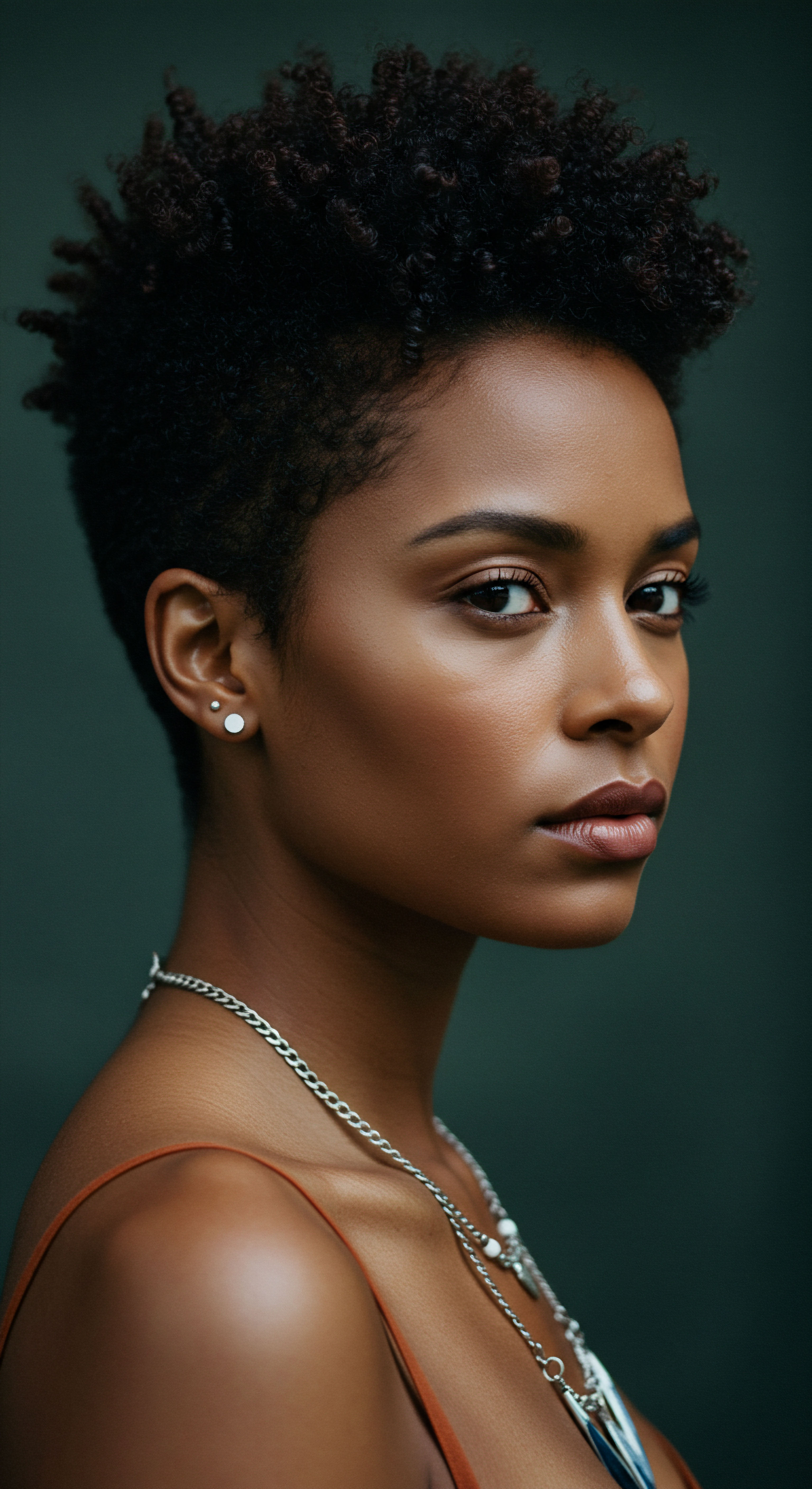
Reflection
As we close this exploration into the natural substances that conditioned ancient coiled hair, a sense of quiet wonder remains. The journey takes us far beyond simple ingredients; it invites us to ponder the ingenuity, the deep observation, and the communal spirit of those who came before us. Their practices, born of necessity and a profound connection to the earth, offer more than just historical facts.
They present a mirror, reflecting our own enduring desire for authentic care, for substances that truly resonate with our hair’s unique story. The ancient whispers of botanical wisdom continue to guide us, reminding us that sometimes, the most profound answers lie in the simplest gifts of nature, waiting to be rediscovered and cherished.
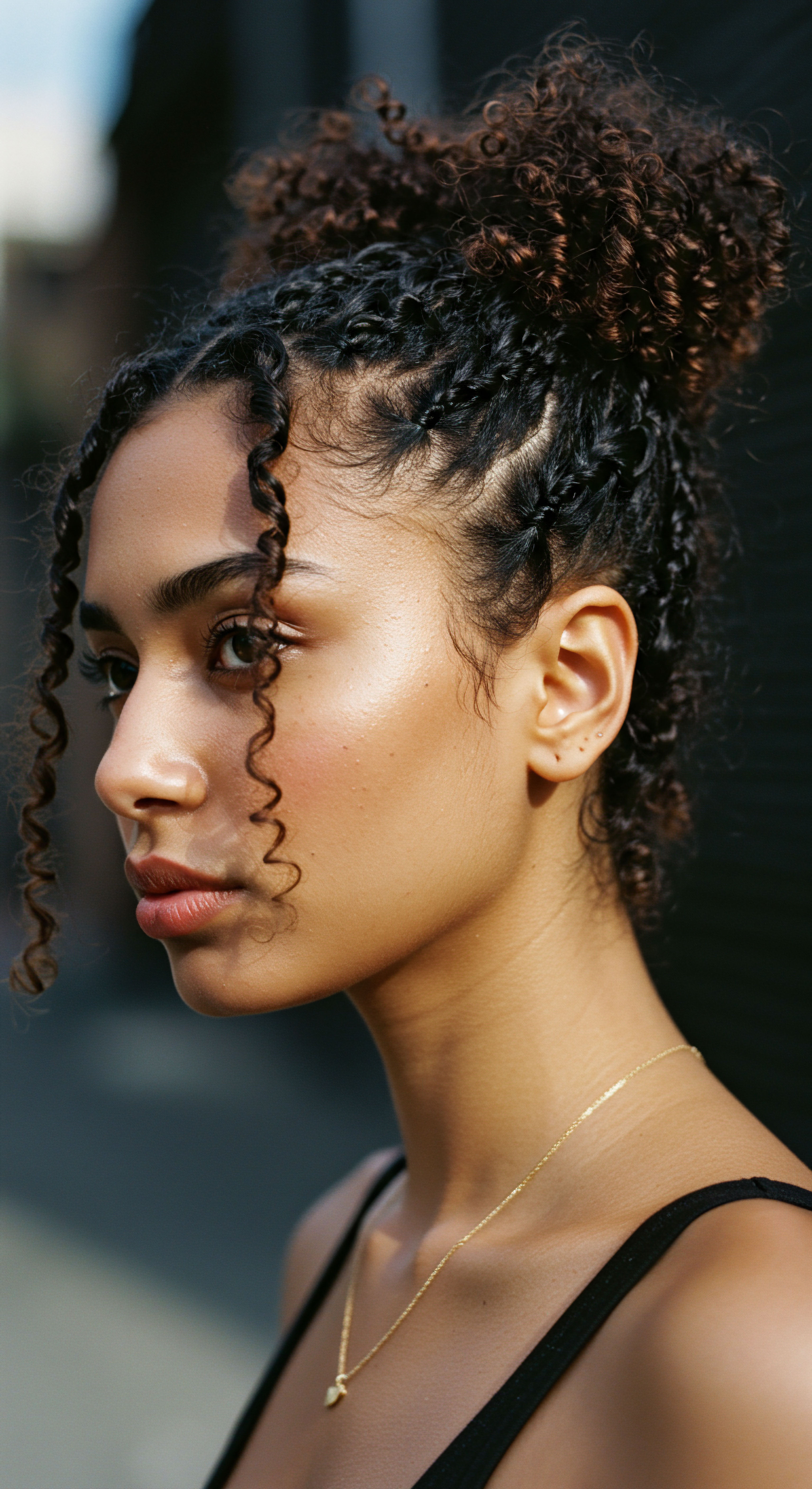
References
- Ashby, Steven P. “Archaeologies of Hair ❉ An Introduction.” Internet Archaeology, no. 42, 2016.
- Chovanec, Zuzana. Women’s Adornment and Hairstyle Tools from Jerash Archaeological Site. Dirasat, 2020.
- Doce, Elisa Guerra. “Direct Evidence of Psychoactive Plant Use in Bronze Age Menorca.” Scientific Reports, vol. 13, no. 1, 2023.
- Fletcher, Joann. Ancient Egyptian Hair ❉ A History of Hairstyles, Wigs and Hairdressing. British Museum Press, 1998.
- Gupta, Prachi, and Richa Singh. “Hair Structure and Care ❉ A Review of Herbal Hair Care Cosmetics.” International Journal of Pharmaceutical Sciences, 2023.
- Lichtman, Rebecca. “A Cultural History of Hair in Antiquity.” DigitalCommons@Fairfield, 2019.
- Macko, Stephen A. et al. “Documenting the Diet in Ancient Human Populations Through Stable Isotope Analysis of Hair.” Philosophical Transactions of the Royal Society B ❉ Biological Sciences, vol. 354, no. 1380, 1999.
- Olson, Kelly. Dress and the Roman Woman ❉ Self-Presentation and Society. University of Texas Press, 2008.
- Orizaga, Manuel. Roman Women ❉ Life and Times. Getty Publications, 2013.
- Robins, Gay. The Art of Ancient Egypt. Harvard University Press, 1997.
- Stephens, Jennifer. The Social History of Hair ❉ From Ancient Times to the Present. Bloomsbury Academic, 2008.
- Walmsley, Alan. Jerash ❉ A Frontier City in the Roman East. Duckworth, 2007.